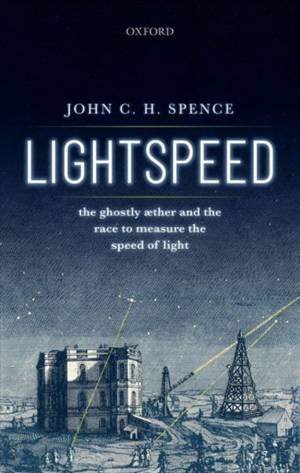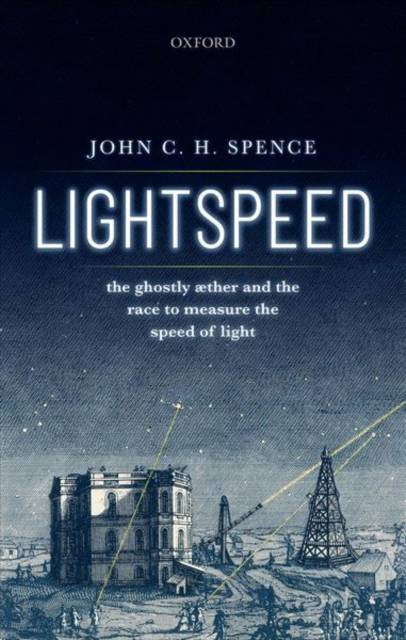
- Afhalen na 1 uur in een winkel met voorraad
- Gratis thuislevering in België vanaf € 30
- Ruim aanbod met 7 miljoen producten
- Afhalen na 1 uur in een winkel met voorraad
- Gratis thuislevering in België vanaf € 30
- Ruim aanbod met 7 miljoen producten
Zoeken
Lightspeed
The Ghostly Aether and the Race to Measure the Speed of Light
John C H Spence
Hardcover | Engels
€ 69,45
+ 138 punten
Omschrijving
This book tells the human story of one of man's greatest intellectual adventures - how it came to be understood that light travels at a finite speed, so that when we look up at the stars, we are looking back in time. And how the search for a God-given absolute frame of reference in the universe led most improbably to Einstein's most famous equation E=mc2, which represents the energy that powers the stars and nuclear weapons. From the ancient Greeks measuring the solar system, to the theory of relativity and satellite navigation, the book takes the reader on a gripping historical journey. We learn how Galileo discovered the moons of Jupiter and used their eclipses as a global clock, allowing travellers to find their Longitude. And how Ole Roemer, noticing that the eclipses were a little late, used this to obtain the first measurement of the speed of light, which takes eight minutes to get to us from the sun. We move from the international collaborations to observe the Transits of Venus, including Cook's voyage to Australia, to the achievements of Young and Fresnel, whose discoveries eventually taught us that light travels as a wave but arrives as a particle, and all the quantum weirdness which follows. In the nineteenth century, we find Faraday and Maxwell, struggling to understand how light can propagate through the vacuum of space unless it is filled with a ghostly vortex Aether foam. We follow the brilliantly gifted experimentalists Hertz, discoverer of radio, Michelson with his search for the Aether wind, and Foucault and Fizeau with their spinning mirrors and lightbeams across the rooftops of Paris. Messaging faster than light using quantum entanglement, and the reality of the quantum world, conclude this saga.
Specificaties
Betrokkenen
- Auteur(s):
- Uitgeverij:
Inhoud
- Aantal bladzijden:
- 256
- Taal:
- Engels
Eigenschappen
- Productcode (EAN):
- 9780198841968
- Verschijningsdatum:
- 14/12/2019
- Uitvoering:
- Hardcover
- Formaat:
- Genaaid
- Afmetingen:
- 145 mm x 218 mm
- Gewicht:
- 476 g

Alleen bij Standaard Boekhandel
+ 138 punten op je klantenkaart van Standaard Boekhandel
Beoordelingen
We publiceren alleen reviews die voldoen aan de voorwaarden voor reviews. Bekijk onze voorwaarden voor reviews.











